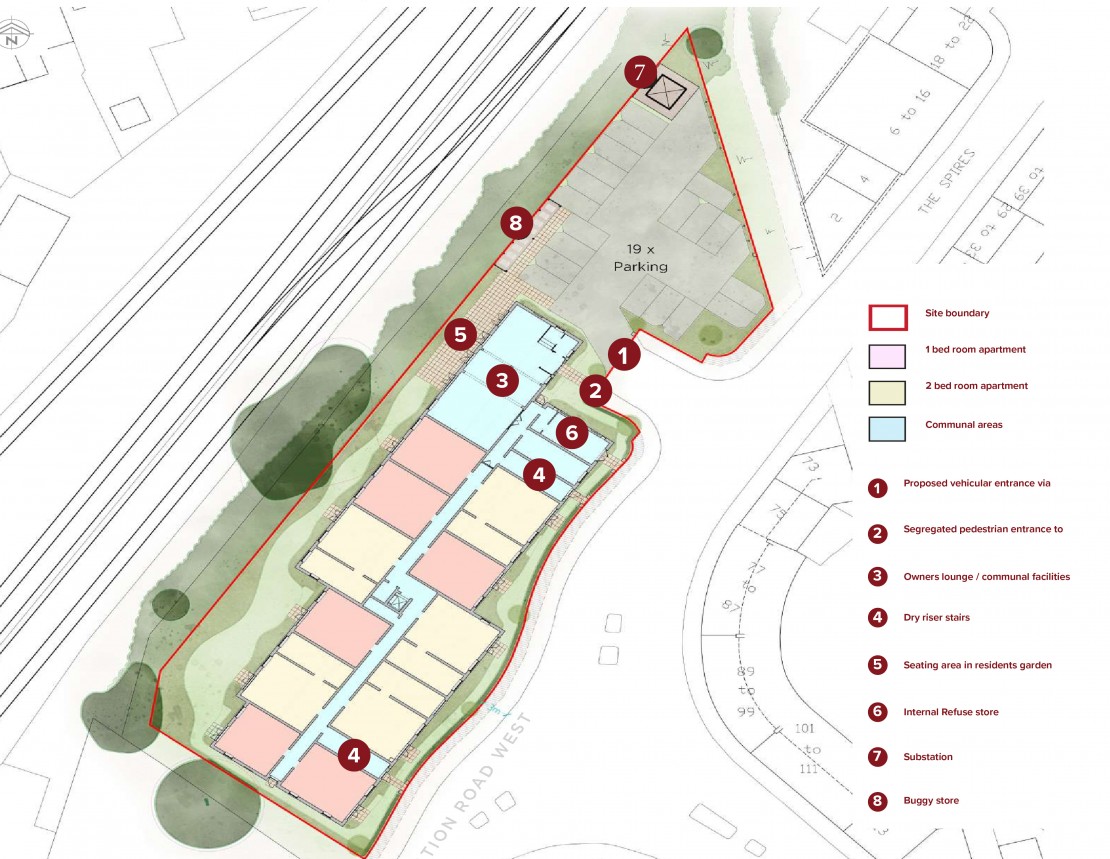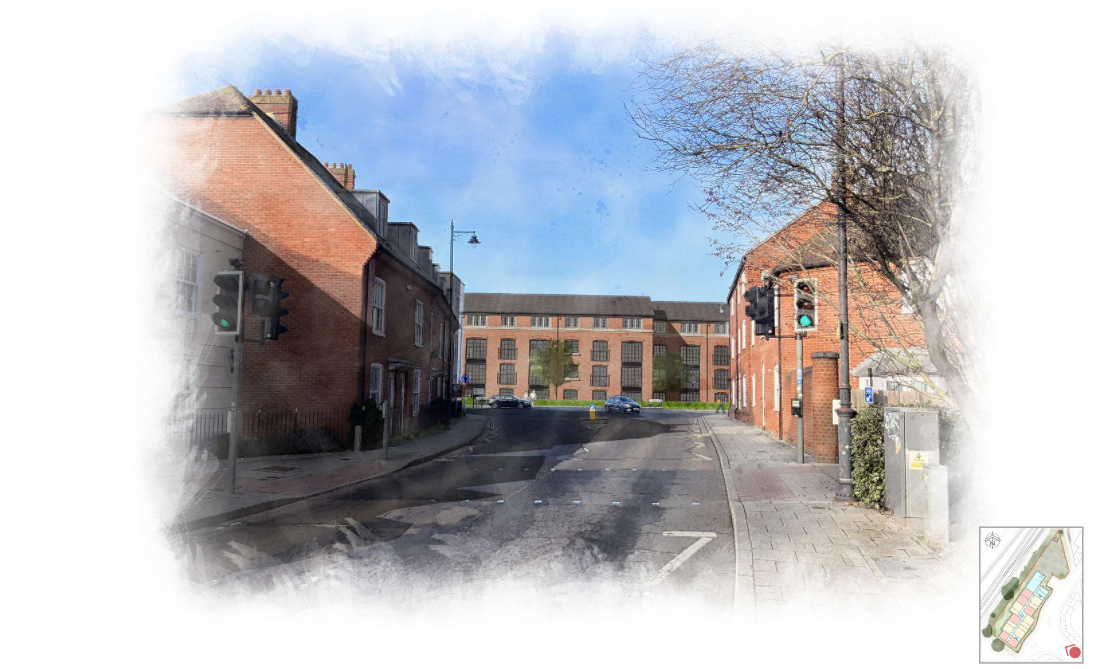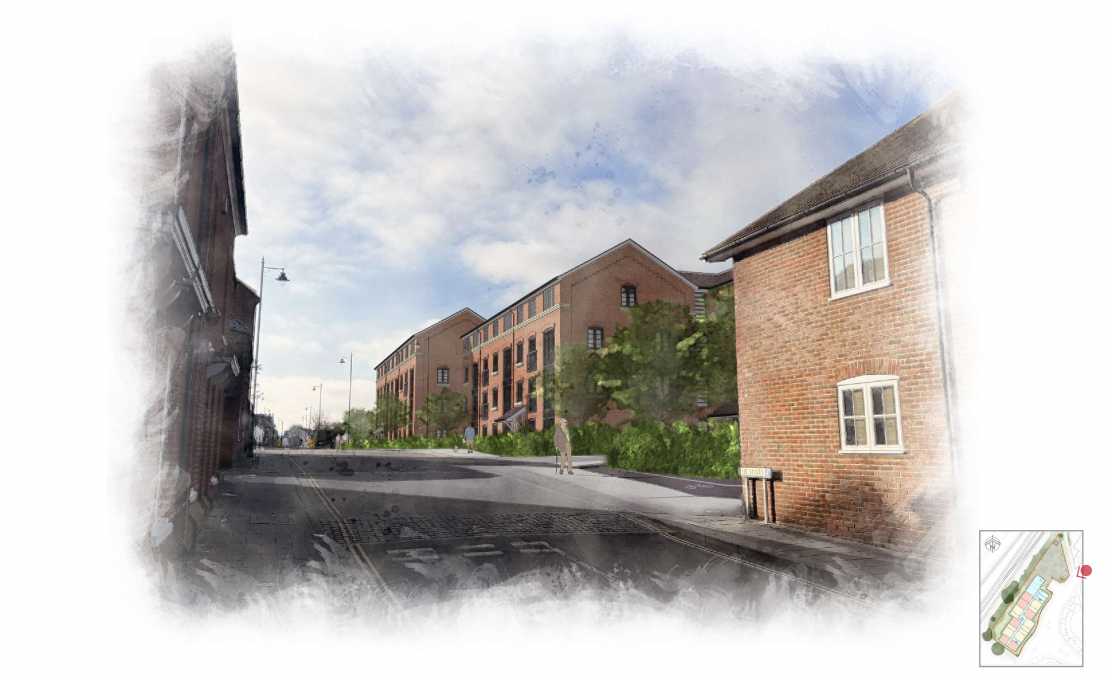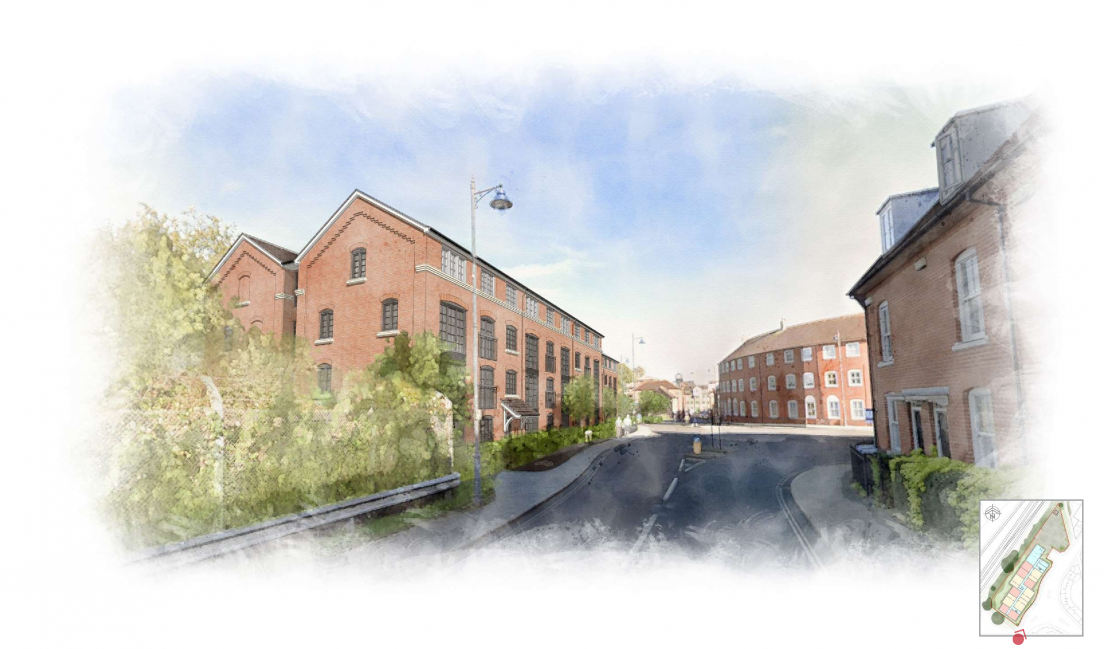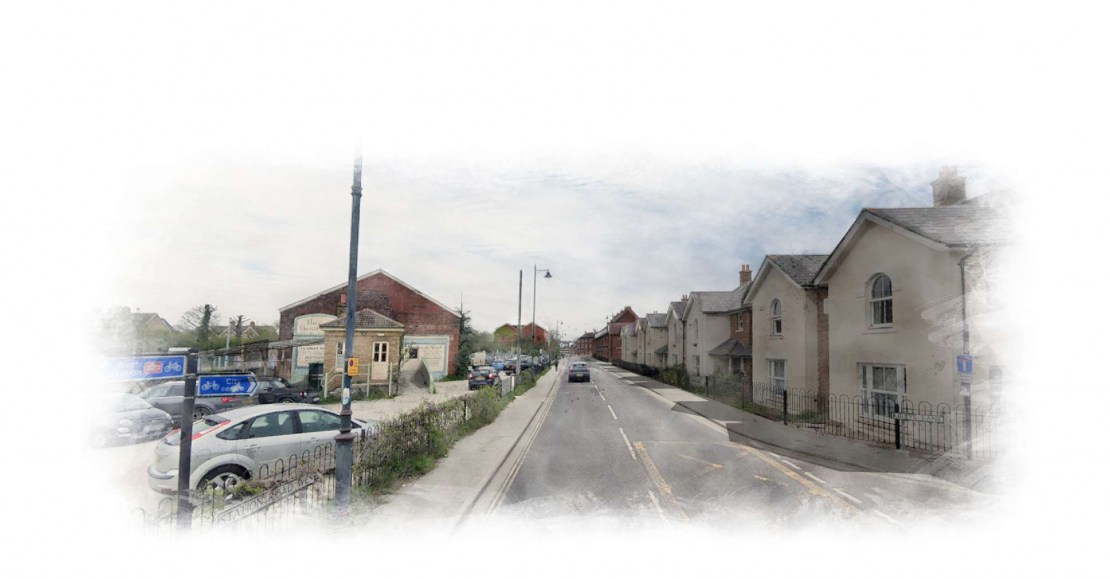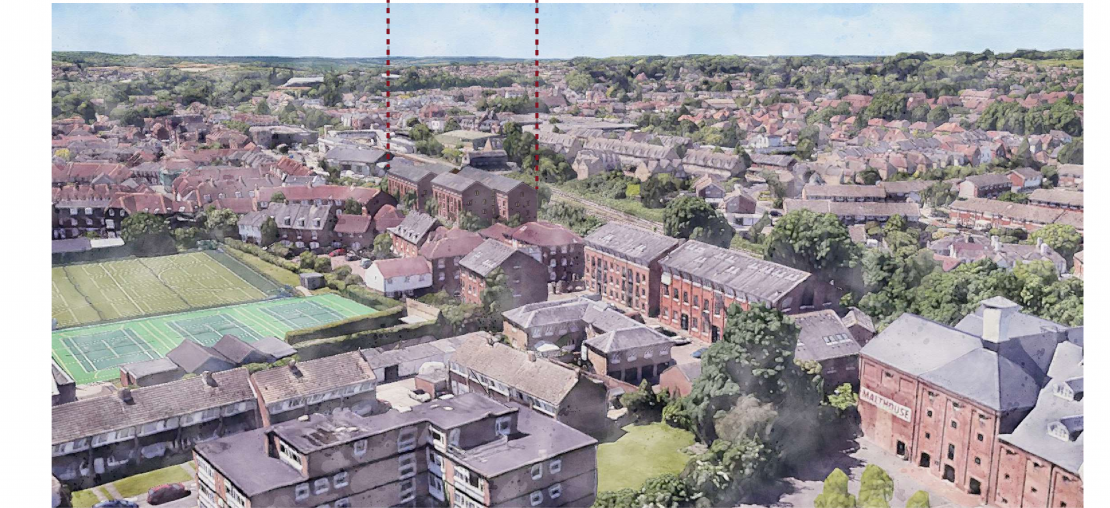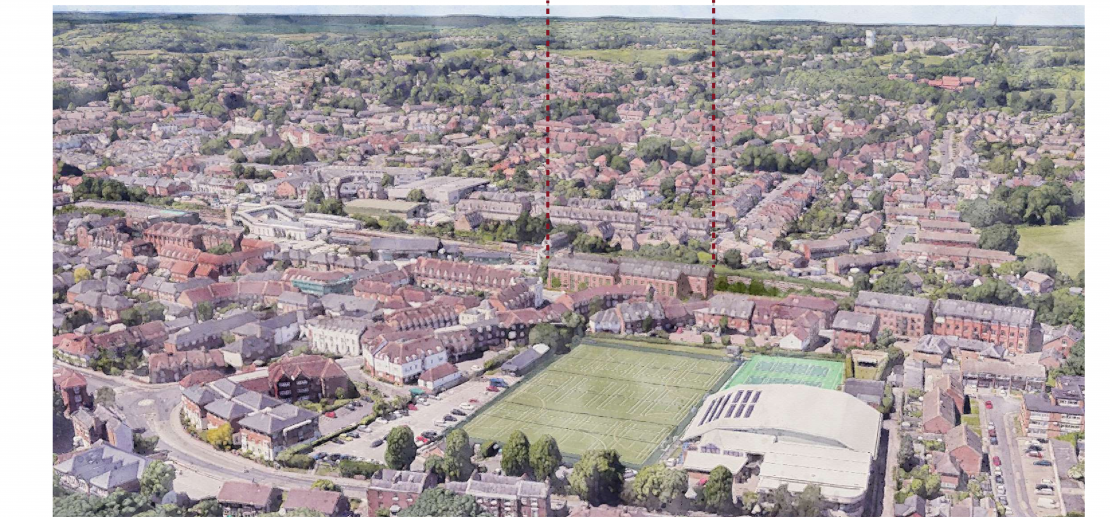
Our Proposals
Churchill Retirement Living’s vision is to deliver a retirement living development which takes full advantage of the well-connected central location.
The proposed development would positively redevelop the unused station car park, and crucial City-centre brownfield site into beneficial use and provide circa 56 apartments for retirement living alongside parking, communal amenities and communal outdoor space.
All developments by Churchill Retirement Living include high quality external amenity space designed for passive exercise and the visual enjoyment of residents, rather than active recreational uses. Planting is considered for longevity, colour all year, seasonal change, maintenance and local native biodiversity.
Local need for additional retirement living communities
According to the Canterbury Housing Needs Assessment (September 2021), substantial growth in Canterbury’s older-age (65+) population is inevitable. This is also highlighted in the Canterbury District Local Plan (adopted in 2017) which states that research suggests “that the District’s population structure will change significantly over the next 20 years” with forecasts showing “that the proportion of older people was set to significantly increase”. The report goes on to say that by 2040, it is estimated that the Age Exclusive housing stock will need to increase by a substantial margin with a large emphasis on more independent living within housing units.
A Churchill Retirement Living development would constitute a significant investment in the type of housing needed in Canterbury, in order to keep the ageing population living independently for longer.
Car Parking
The typical age profile of those currently living at a Churchill Retirement community is an 80- year-old widow. Generally, 50% of residents also come from within a 5-mile radius of the location. Given the above age-profile, residents of Churchill communities tend to not have cars.
It is also generally found that those who do initially have cars tend to give them up soon after moving into a lodge as they find they no longer need it given the sustainable location and neighbourly living environment.
At this stage, the proposals include 56 retirement apartments, providing 19 unallocated parking spaces in addition to secure cycle and mobility scooter parking.
As retirement living is a very different operational use than residential apartments or care home developments, Churchill have developed an evidence base of research undertaken across several existing Churchill Retirement Developments.
This research has shown that Churchill’s existing sites typically have a parking demand of 0.28 spaces per apartment. As such the parking demand is forecast to be in the region of 15.7 parking spaces.
Churchill is proposing 19 parking spaces at a ratio of 0.34 spaces per apartment. Given this exceeds the forecast parking demand, it is likely to exceed the need for parking at any given time and is therefore considered to be appropriate, especially given the town centre location meaning that a wide range of everyday services are within a short walk from the site. The site is also serviced by various transport links making the site highly connected and sustainable; includes the close Canterbury West train station that would provide quick and easy access to places further afield for the residents of the proposed retirement community.
A wide range of benefits
Much research has been undertaken on the benefits of purpose-built retirement communities in our town centres and Churchill’s proposals for Oadby will make a significant contribution in terms of social, economic and environmental benefits, including:
Supporting Local Businesses
The development is situated less than 5-minutes’ walk from the St Dunstan’s Street service area where numerous shops and facilities are widely available and which will benefit from additional patronage by the residents of the proposed retirement community.
The occupants of retirement living typically have a good level of disposable income, having downsized and released considerable equity, and tend to shop frequently. Therefore, the spending power of the ‘grey pound’ has the unique ability to revitalise local high streets. Recent research, published by Homes For Later Living, has shown that on average people living in a retirement community generate £550,000 of local spending per year, £347,000 of which is spent on the local high street, directly contributing to keeping shops open, creating new jobs and enabling high streets to thrive.
Meeting the Needs of Older People
By moving to a Churchill Retirement Community of like-minded people, isolation and loneliness are significantly reduced as are anxieties related to the maintenance of the home and to safety and security experienced by many older people, enabling our residents to enjoy greatly improved health and general wellbeing.
Reducing Demands on Health and Social Services
Retirement communities are shown to reduce the risk of health challenges for elderly people as well as improving safety and security. Research has shown that retirement communities contribute savings to the NHS and social care services of approximately £3,500 per resident, per year.
Freeing Up Market Homes
Research has shown that by providing homes at the top of the housing ladder, which better meet the needs and aspirations of older people, specialist retirement housing developments of the kind delivered by Churchill Retirement Living free up homes for families that need extra space to move into and through the chain effect, free up more homes for first-time buyers.
By giving older people in and around Canterbury the option to downsize, our plans for the site would help release many larger.
Proposed site plan
Images showing artistic impressions of the site
